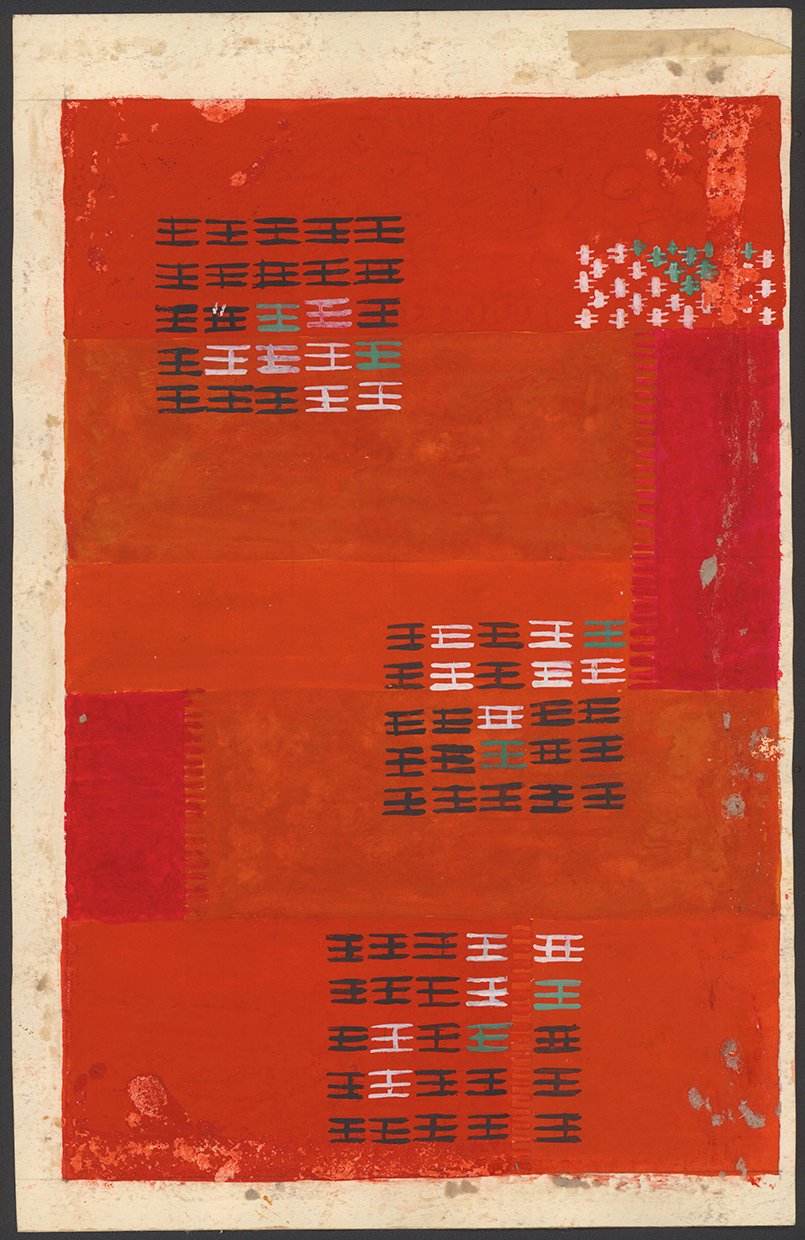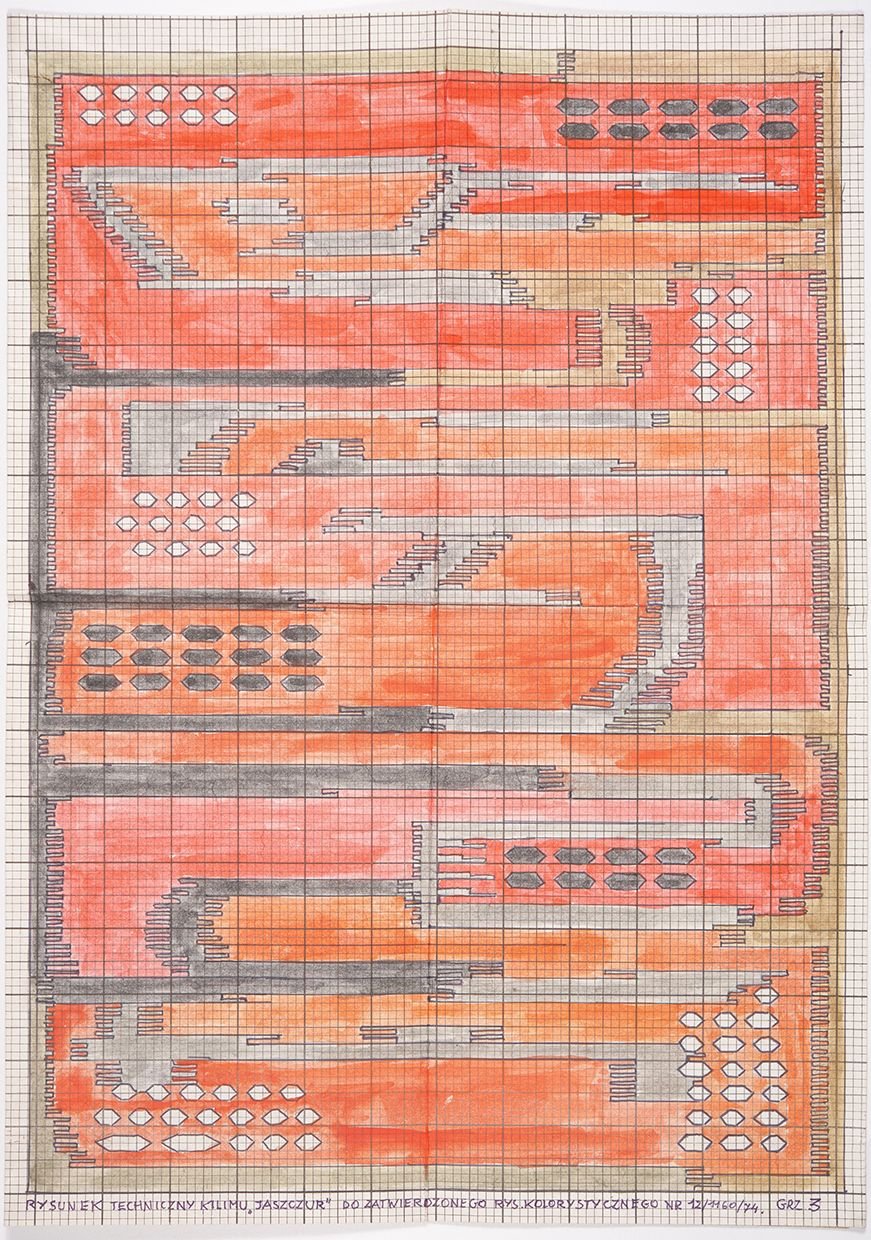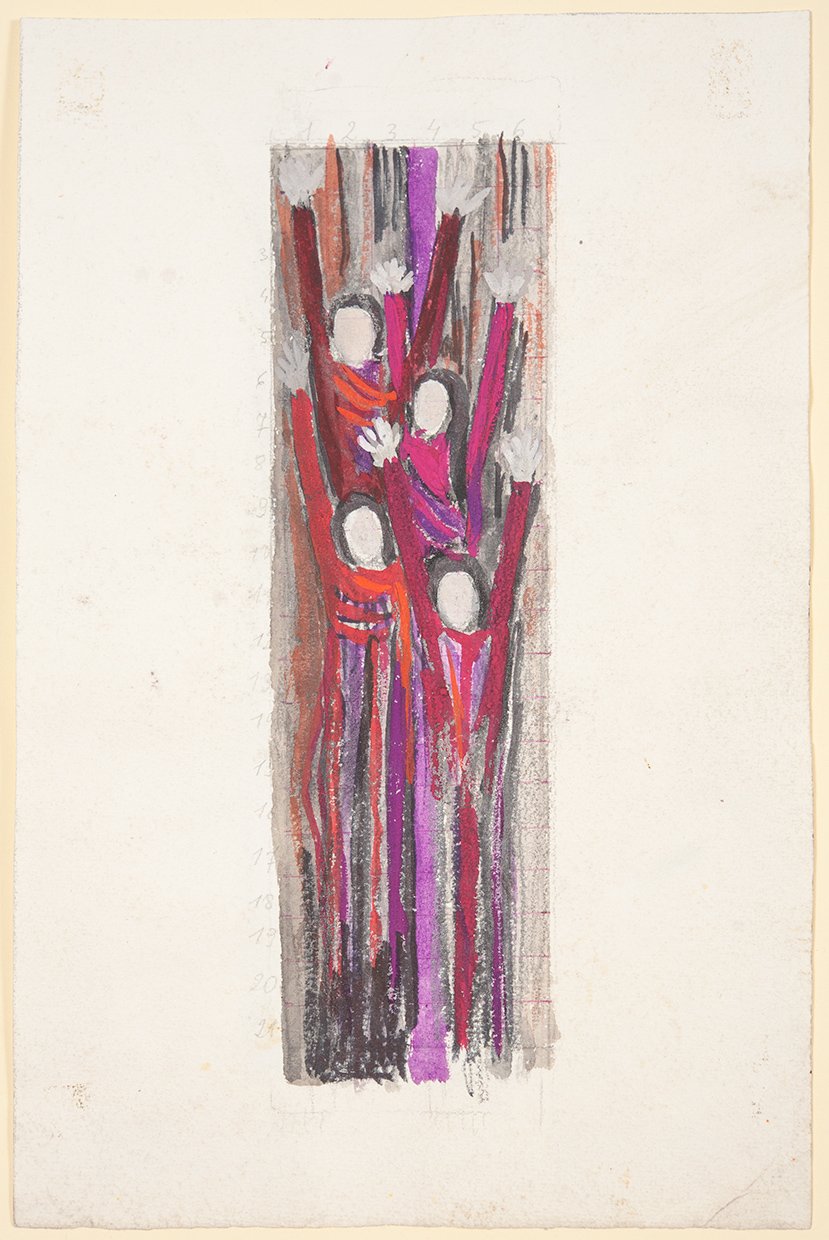Maria Bujakowa (1901–1985)
lady of THE Polish embroidery
Maria Bujakowa in Kościelisko 1980, photo by J.Frączak, courtesy of B.Szafraniec
Poland experienced a remarkably fruitful period in the field of textiles during the 1960s and 1970s. It was during this time that numerous Polish artists achieved international acclaim and received prestigious awards, leading to the establishment of the renowned Polish School of Textiles. The textile creations from this era garner very special recognition now, as we rediscover the value of handmade, one-of-a-kind, artisanal pieces.
Undoubtedly, Magdalena Abakanowicz stood out as one of the most celebrated and bold figures of that period. However, there were also many other artists who embraced a more traditional and serene approach while still making a significant impact on the Polish textile scene. One such artist was Maria Bujakowa.
Maria Bujakowa was an outstanding figure, possessing a wide range of skills and expertise across various textile media. Her impact on the development of woven art in post-war Poland and the revival of the handcraft scene in Zakopane was truly significant. She spent majority of her career balancing time between education and personal work and was highly regarded and successful in both activities. From the mid-sixties she focused more on her own creative practice. Her body of work consists of 50 distinct textiles that showcase masterful combinations of techniques, including the intricate embroidery on lace. Additionally, she created over 120 kilims adorned with her signature geometric patterns and refined aesthetic.
Maria Bujakowa with members of a folk music band in Zakopane, 1970s, courtesy of B.Szafraniec
Maria Bujakowa is often hailed as the "lady of the Polish embroidery” - it was her though to uplift this technique from a mere "housewife activity" to a rank of art. Her preferred media were wool and linen, which she skilfully employed in her unique embroideries. Bujakowa drew inspiration from a diverse range of sources, including antique textiles to quite overlooked folk techniques - notably the traditional Podhale embroidery. She not only celebrated such folk references but also elevated them throughout her work. Furthermore, Bujakowa had significant impact in the development of the Polish bobbin lace introducing linen threads and vegetable dyes into the process.
To Szymanowski, 1982, homespun embroidery, 185 x 65 cm, courtesy of the Tatra Museum in Zakopane
Born in 1901 in Kołomyja, Maria Bujakowa came from an intelligentsia family. Her mother was Zofia née Wasung, and father Jarosław Łomnicki - an entomologist, geologist and director of the Natural History Museum in Lviv. Even at a tender age, Bujakowa would display evident signs of artistic inclinations. Her childhood sketches would often feature insects from her father’s extensive collection. Experiencing a loss of her mother at the age of 18, young Maria had to grow up quickly. Taking over household duties and care over two younger brothers, forced her to delay her pursuit of further education by two years. Despite the challenges she faced however, her artistic talents continued to blossom.
In 1921 Bujakowa entered National School of Industry in Lviv where she studied decorative painting under Kazimierz Sichulski - a prominent Polish artist affiliated with the Young Poland movement. No wonder it was when Bujakowa’s fascination with artistic textiles, particularly killims occurred. The interwar period was a real killim renaissance in Poland. Those handmade pieces became particularly relevant due to trending of an Arts and Crafts movement, which placed a high value on handmade craftsmanship over mass-produced items.
Bujakowa’s kilim design for the textile workshop of Irena Petzold-Dawidowa, c.1927-1929, private collection, courtesy of B.Szafraniec
In 1926 Bujakowa moved to Vienna to pursue a one-year course at famous “Kunstgewerbeschule School of Artistic Crafts with graphic design, enamel, and weaving specialisms. It was fruitful time filled with learning and opportunity to meet outstanding artists and world class professors such as Rudolf Larisch or Josef Hoffmann.
Following her return to Lviv a year later, she pursued further education in a field of fabric dyeing and started working for a textile workshop of Irena Petzold-Dawidowa. Within this role, she took on the responsibility of designing kilims and dyeing raw materials. In the subsequent years, Bujakowa dedicated her time to teaching at the State Vocational School for Girls in Lviv and from 1932 onwards also at the Public Vocational Supplementary School. Bujakowa conducted a variety of classes within lace making, drawing, embroidery and tailoring simultaneously managing her own creative work in textiles and applied graphics.
"Ład" Artists' Cooperative gathered some of Poland’s most influential creators of applied art, leaving behind beautiful and functional design pieces that can successfully decorate today's interiors. Established in 1926 by professors and students of the Academy of Fine Arts in Warsaw, the cooperative embraced a principle of drawing from the past, honouring old techniques while striving for a contemporary and functional form. The cooperative's success relied on the close collaboration between designers and skilled craftspeople, ensuring a harmonious balance between creativity and impeccable craftsmanship.
Runners, 1955, designed by T.Brzozowski created by M.Bujakow, embroidery and broaching, 310 x 190 cm, courtesy of Museum of Sport and Tourism in Warsaw
Bujakowa joined the "Ład" cooperative in 1930 in Lviv. She continued her involvement after moving to Warsaw in 1934, coinciding with her marriage to Jakub Bujak, an alpinist and climber. For Bujakowa"Ład" offered a suitable design environment for her work and development. She shared the same values and approach to design and craft as other members of the cooperative.
Alongside designing, Maria Bujakowa also maintained her teaching career. In 1935, she received a promotion to the position of Artistic Director at the Cooperative of Graduates of Handicraft Schools called "Inicjatywa" In this role, she oversaw apprenticeships and focused on embroidery. One of the most important projects that Bujakowa supervised at Inicjatywa was a four-piece textile “Jan III Sobieski”. The tapestry was designed by Mieczysław Szymanski and Bujakowa was responsible for the execution of its intricate embroidery part of work. It was showcased at The International Exhibition in Paris in 1937, where it earned the prestigious Grand Prix. Unfortunately, the outbreak of World War II in 1939 coincided with its exhibition in New York. Having spent all the years in collections of the Le Moyne College in Syracuse New York, it found its way back to Poland last year. It can now be admired at the Polish History Museum in Warsaw.
Harnasie, 1972, embroidery on lace, 110 x 260 cm, courtesy of Tatra Museum in Zakopane
An important milestone in Bujakowa’s career was an invitation to start the "Ład" cooperative in Zakopane where the artist moved in 1945. Zakopane, a small southern highland town in the Polish region of Podhale, was a magnet for designers, celebrities and various peculiar personas from the art sphere. They turned the town into an iconic point on a cultural map of Poland. It was a fertile ground for Bujakowa. Upon her arrival in Zakopane, Bujakowa secured a position of a director at the Lace School, an esteemed institution with a rich history. However, Bujakowa took up a challenge of revitalising it from quite a devastated, post war shape. Her contacts, organisational skills, vision and charismatic leadership made the school bloom again. Its curriculum was updated with new pathways such as embroidery, regional tailoring and artistic weaving. Bujakowa implemented modern teaching methods that encouraged creativity and celebrated the individualism of her students. It was particularly empowering for the local young women, as it provided them a high-quality education and promising career prospects within their heritage crafts.
In 1948, Maria Bujakowa, along with 23 other talented artists and craftspeople co founded Zakopane Pattern Workshops - one of the most influential centres for Polish contemporary textiles. Bujakowa took charge of the weaving workshop and lead its design direction. The primary objective of the cooperative was to develop, celebrate and elevate Zakopane folk craft through the creation of new designs that combined local heritage techniques with contemporary aesthetics.
Dialectics, 1950s, design by M.Bujakowa created by. H.Chramiec, M.Michalik, bobbin lace, 240 x 300 cm, courtesy of Tatra Museum in Zakopane
Drawing inspiration from the local surroundings, utilizing locally sourced materials, and engaging local artisans, the cooperative encouraged a close collaboration between designers and craftspeople Fruit of such work was collaborative with both parties contributing equally. Bujakowa’s significant achievement within Zakopane Pattern Workshops was the revitalisation of the local killim scene. Close collaboration between professional artists and highlander weavers resulted in creation of exceptional pieces of highly unique character and fresh canon of patterns.
Bujakowa remained artistically active until her final days of life. In the 1970s she undertook a detailed documentation of her work noting down information about various issues and challenges she encountered during her creative process. In fact, many of these preserved notes, sketches and initial designs possess such a beauty that they stand as little artworks in their own right.
above : For Two Voices, 1971, textile design, private collection, courtesy of B.Szafraniec
below: textile designs : Abacus / Saurian / Calling , courtesy of Tatra Museum in Zakopane
On January 22, 1985, Maria Bujakowa passed away in Zakopane, her cherished artistic haven. She was laid to rest in Pęksowy Brzyzek National Cemetery in Zakopane alongside numerous esteemed Polish artists who lived and created in the region.
A vast array of her work was presented at the “Beautiful things. Textiles of Maria Bujakowa” exhibition running between March and July 2021 organised by the Museum of Opole Silesia and curated by Bogna Szafraniec. It was a first exhibition in over two decades dedicated solely to the artist. For those who can read Polish, an album featuring reproductions of the exhibited works is still available for purchase, offering a comprehensive view of the artist’s legacy. Interested individuals can acquire it by following the link provided.
By merely observing Bujakowa’s work online one cannot capture its true essence and magnificence. The richness of colours, highly intelligent selection of materials, elaborate application of intricate techniques… To fully comprehend the exceptional nature of her creations, one must witness them up close and personally experience the depth and detail that makes her work so special. Maria Bujakowa's textiles are prominently featured in permanent collections of institutions such as The Central Museum of Textiles in Łódź, The Tatra Museum in Zakopane, and the National Museum in Warsaw.
Bujakowa’s textiles exhibited in Zakopane, 1985, photo by S. Momot, private collection, courtesy of B.Szafraniec











